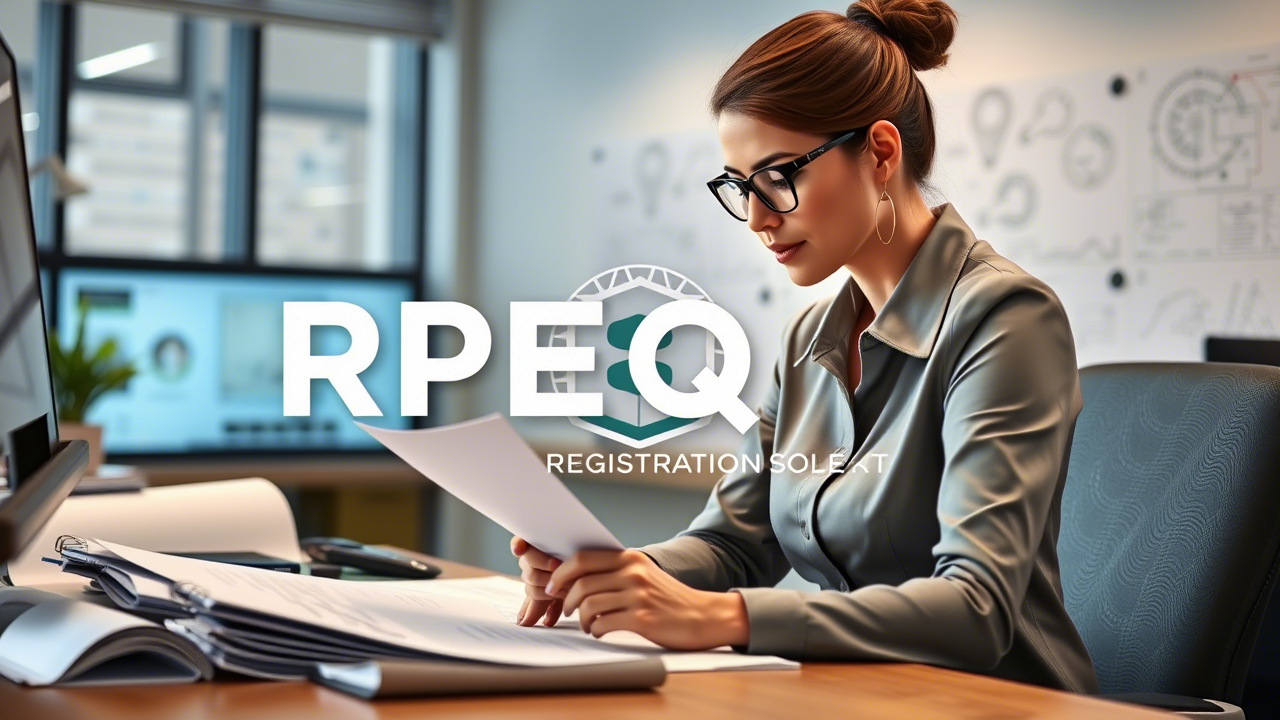How to Avoid Compliance Issues by Getting Registered as an RPEQ Engineer

If you're an engineer working in Queensland or planning to offer professional engineering services there, here's one thing you need to know upfront:
If you're not on the RPEQ Register, you could be breaching the law — even if you’re doing great work.
It’s something many skilled engineers overlook, especially if they’re new to the state or coming from overseas. But getting registered as an RPEQ engineer isn’t just about titles — it’s about staying compliant, avoiding legal trouble, and protecting your career.
In this article, I’ll explain what the RPEQ is, why registration matters, and how you can avoid unnecessary compliance issues by getting registered properly.
Let’s keep it simple and practical.
What Is the RPEQ?
RPEQ stands for Registered Professional Engineer of Queensland. It’s a legal designation regulated by the Board of Professional Engineers of Queensland (BPEQ) under the Professional Engineers Act 2002.
If you're carrying out professional engineering services in Queensland, you must either:
-
Be listed on the RPEQ Register, or
-
Work under the direct supervision of someone who is already an RPEQ
It doesn’t matter if you have years of experience or an international qualification — without RPEQ status, you're not legally allowed to practice independently in Queensland.
Why Registration Matters for Engineers
I’ll be honest — when I first heard about the RPEQ requirement, I thought, “Do I really need this? I’ve been doing the job for years.”
But once I looked into it, I realised just how important it is — especially when it comes to compliance and liability.
Here’s why:
✅ It’s the Law
Under Queensland law, only RPEQ engineers can legally carry out or certify professional engineering services. Not following this rule can lead to fines or disciplinary action — for both the engineer and the company.
✅ It Builds Trust with Clients
Clients, especially in construction, infrastructure, and government projects, will often only work with RPEQ engineers. Being on the register proves you're qualified, competent, and accountable.
✅ It Protects Your Career
RPEQ status shields you from risky situations where you could be blamed for work outside your legal authority. It also protects your professional reputation.
Common Compliance Risks Without RPEQ
Let me break down a few scenarios where not being registered can land you in hot water:
❌ Signing Off Engineering Designs
If you sign or certify technical documents without being on the RPEQ Register, you’re breaking the law — even if you're qualified in another state or country.
❌ Working Independently
If you work as a sole trader, consultant, or contractor without RPEQ status, you're not legally allowed to provide engineering services in Queensland.
❌ Taking On Project Responsibility
You might be managing or leading a project, but if you're not RPEQ registered, you can’t legally approve or certify work, which could result in delays, fines, or legal disputes.
These risks are real — and they’re completely avoidable by simply getting registered as an RPEQ engineer.
How to Get on the RPEQ Register
So, what’s involved in becoming an RPEQ?
Here’s a quick overview of the process:
1. Eligibility Check
You’ll need:
-
An accredited engineering degree (or equivalent overseas qualification)
-
At least five years of relevant experience
-
Evidence of continuing professional development (CPD)
2. Assessment
Your application will be reviewed by an approved assessment entity (like Engineers Australia or Professionals Australia). They’ll evaluate your qualifications, experience, and competency.
3. Apply to BPEQ
Once the assessment body approves you, you’ll apply directly to the Board of Professional Engineers of Queensland.
You’ll need to submit:
-
Proof of ID
-
Your assessment outcome
-
Application form and fees
4. Registration and CPD Commitment
Once accepted, you're officially on the RPEQ Register! You'll need to keep up with annual CPD requirements to maintain your registration.
Tips for a Smooth RPEQ Application
Having gone through this myself, here’s what helped:
-
Start early — the process can take a few months, especially if you're still gathering documents.
-
Be honest and detailed — when describing your experience, focus on your role, decisions, and outcomes.
-
Keep records — CPD logs, project summaries, and supervisor references will come in handy.
-
Ask for support — talk to someone who’s been through the RPEQ process or use a professional review service.
And remember: being proactive about RPEQ registration shows your professionalism, which goes a long way in this industry.
RPEQ and Working Interstate or Overseas
One question I get a lot is: “Do I need RPEQ if I’m registered in another state?”
Short answer: Yes — if you’re working in Queensland. Engineering is regulated differently across Australian states. For Queensland, the RPEQ system is separate and mandatory.
Even if you're Chartered (CPEng) or registered elsewhere, you still need to go through the RPEQ process to work legally in QLD.
And if you're coming from overseas, you'll likely need to go through a qualification equivalency process first.
Final Thoughts: Don’t Risk It — Get Registered
Look, you’ve worked hard to build your career. Don’t let a missing registration put you at legal or professional risk.
Becoming an RPEQ engineer might take a little time and effort, but it’s worth it. It gives you peace of mind, protects your future, and shows employers and clients that you're serious about your profession.
If you’re planning to offer engineering services in Queensland, make it your priority to get on the RPEQ Register — not just for compliance, but for confidence.
Need Guidance on the RPEQ Process?
There are support services, mentors, and assessment bodies that can guide you step-by-step. Don’t leave it to guesswork — reach out and get started on the right path.
- Art
- Causes
- Crafts
- Dance
- Drinks
- Film
- Fitness
- Food
- Games
- Gardening
- Health
- Home
- Literature
- Music
- Networking
- Other
- Party
- Religion
- Shopping
- Sports
- Theater
- Wellness


